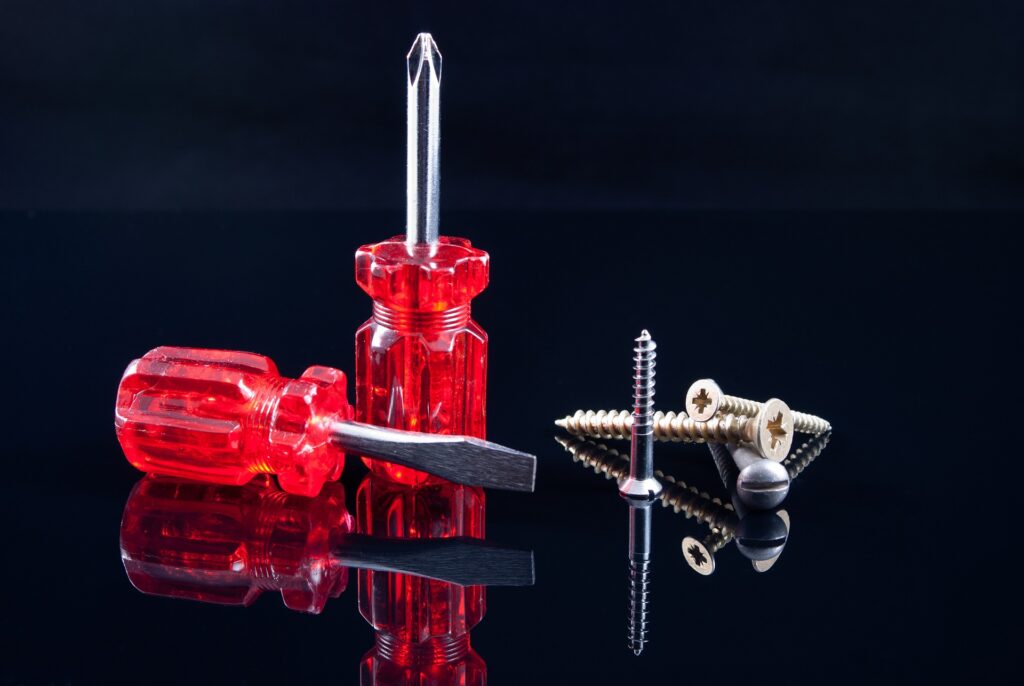Hand tools
Choosing the Right Screwdriver for the Job

Choosing the right screwdriver is essential for successful and safe DIY and home improvement projects.
In the world of DIY and home improvement projects, having the right tools can make all the difference. One often-underestimated tool is the humble screwdriver. Whether you’re assembling furniture, fixing appliances, or tackling more significant projects, choosing the right screwdriver for the job is essential for efficiency and safety. In this blog post, we’ll explore the different types of screwdrivers and provide guidance on how to select the perfect one for your specific task.
The Anatomy of a Screwdriver
Before diving into the selection process, let’s take a moment to understand the basic components of a screwdriver:
Handle: The handle, or grip, is the part you hold while using the screwdriver. It should be comfortable and provide a secure grip to prevent slipping.
Shaft: The shaft is the long, slender part of the screwdriver that extends from the handle to the tip. It’s essential that the shaft is made of durable materials to withstand torque and prevent bending or breaking.
Tip: The tip of the screwdriver is the part that engages with the screw head. Screwdriver tips come in various shapes and sizes, each suited for different types of screws.
Now that we’ve covered the basics, let’s move on to the key considerations when choosing the right screwdriver.
Consider the Screw Type
One of the most critical factors in selecting the right screwdriver is matching it to the type of screw you’re working with. Here are some common screw types and the corresponding screwdrivers:
Flathead Screwdriver (Slotted): Flathead screws have a single straight slot across the top. To work with these screws, you’ll need a flathead screwdriver. They come in various sizes to accommodate different screw head widths.
Phillips Screwdriver: Phillips screws have a cross-shaped slot, and to turn them, you’ll need a Phillips screwdriver. These are commonly used in a variety of applications and come in different sizes, indicated by numbers such as #1, #2, or #3, with #2 being the most common.
Torx Screwdriver: Torx screws have a star-shaped or six-pointed slot. Torx screwdrivers are suitable for these screws and are commonly used in electronics and automotive applications.
Hex (Allen) Screwdriver: Hex screws have a hexagonal recess, and to work with them, you’ll need a hex screwdriver or Allen wrench. These are frequently used in furniture assembly and bicycle maintenance.
Match the Size
In addition to considering the screw type, it’s crucial to match the screwdriver size to the screw head. Using the wrong-sized screwdriver can lead to stripping the screw head, making it challenging to remove or tighten the screw properly.
To match the size, look for the appropriate markings on the screwdriver or refer to the screw size chart provided by the manufacturer. Using the right-sized screwdriver ensures a secure fit and minimizes the risk of damaging the screw or injuring yourself.
Choose the Right Handle Style
Screwdriver handles come in various styles to suit different preferences and needs. When selecting a handle style, consider factors like comfort, grip, and ergonomics. Here are some common handle styles:
Flat-Head or Slotted: These screwdrivers typically have flat, rectangular handles. They are straightforward and comfortable to use for basic tasks.
Phillips: Phillips screwdrivers often have round or oval-shaped handles designed to provide a secure grip while applying torque.
Cushioned Grip: Screwdrivers with cushioned or rubberized handles are ergonomic and provide extra comfort during extended use. They also offer better grip, reducing the risk of slipping.
Precision Screwdrivers: These screwdrivers are typically smaller and have thin, cylindrical handles designed for delicate work, such as electronics repair.
Choose a handle style that suits your hand size, the type of work you’ll be doing, and your personal comfort preferences.
Consider Specialty Screwdrivers
In addition to standard screwdrivers, there are several specialty screwdrivers designed for specific tasks. Here are a few examples:
Multi-Bit Screwdrivers: These versatile tools come with interchangeable bits, allowing you to work with various screw types using a single handle. They are convenient for DIYers who tackle a wide range of projects.
Screwdriver Sets: Screwdriver sets often include a variety of screwdrivers, including different types, sizes, and handle styles. These sets are great for comprehensive toolkits.
Ratcheting Screwdrivers: Ratcheting screwdrivers have a mechanism that allows you to turn screws with less effort. They are handy for repetitive tasks or when working in tight spaces.
Electric Screwdrivers: For those who want to speed up the screw-driving process, electric screwdrivers (powered by batteries or electricity) are a great option. They are ideal for assembly tasks and larger projects.
Safety and Maintenance
Lastly, consider safety and maintenance when choosing a screwdriver. Here are some important safety tips:
Always wear appropriate safety gear, such as safety glasses, when working with screwdrivers to protect your eyes from potential debris.
Ensure your screwdriver is in good condition. Check for any signs of wear or damage, including bent shafts or worn tips, and replace or repair as needed.
Store your screwdrivers properly in a dry, cool place to prevent rust or corrosion.
Keep your screwdrivers clean and free of debris to maintain their performance and durability.
Conclusion
By considering factors such as the screw type, size, handle style, and any specialty needs, you can ensure that you have the perfect tool for the job. Remember that investing in high-quality screwdrivers and maintaining them properly will not only make your tasks more efficient but also extend the lifespan of your tools. So, the next time you pick up a screwdriver, make sure it’s the right one for the task at hand. Your projects will thank you for it.
More reading
What Is The Single Most Useful Tool